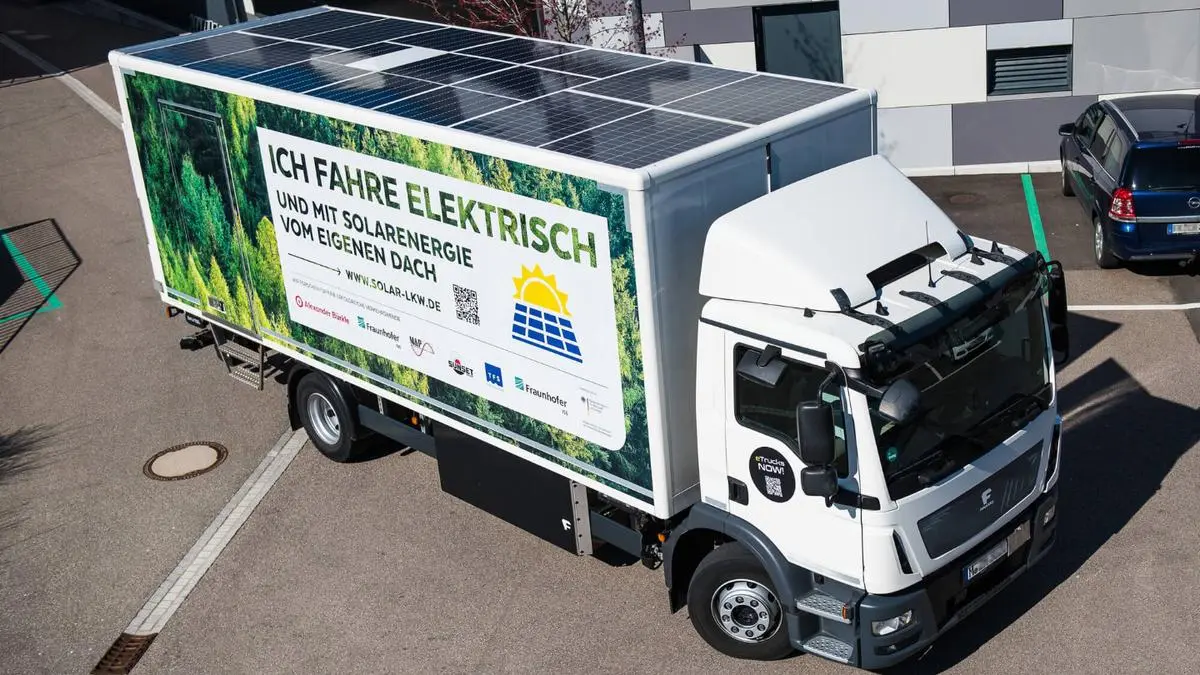RE BOOST. An e-truck with a solar hood and photovoltaic roof, developed by Fraunhofer Institute of Germany
Between August 25 and 31, an interesting car race is set to take place in Australia. The racing cars will be flagged off at Adelaide in the south and they will zip 3,000 km across the country and pull up at Port Darwin in the north.
What’s interesting here is that the racing cars are solar-powered. And the race is set in peak Australian winter, under limited sunshine.
The annual Bridgestone World Solar Challenge has been around for several years, but will now see an Indian participation for the first time. A group of students from the Centre for Innovation, IIT-Madras, will race their solar-powered ‘Aagneya’ car.
The objective of the challenge is to promote solar in vehicles, but, clearly, there may never be a time when regular passenger cars are fully solar-powered — there just isn’t enough power. However, with electric vehicles growing in popularity, many have wondered about the feasibility of having a solar panel on the vehicle’s roof to generate some electricity, even if only a little, to give the batteries an extra oomph.
But technology is moving ahead of that. Today, vehicle companies are not looking at solar panels bolted to the roof; instead, the entire roof will be a solar panel. This is ‘vehicle integrated photovoltaics’ or VIPV — solar cells are directly embedded unobtrusively into surfaces like the roof, hood and side panels of the vehicle. The entire skin of the vehicle becomes a solar power generator.
“This is an emerging technology,” says Prof Y Raja Sekhar of Vellore Institute of Technology, who is one of the four authors of a study on VIPV in India, published in Energy. The study was conducted by VIT, University of Lisbon (Portugal), and Fitchner Consulting Engineers.
They ran a VIPV car for three hours, measured the generation, and concluded that it is possible to get 1,200-1,800 Whr “when driven a full day”.
Sekhar told Quantum that solar power can potentially take care of auxiliary power consumption — such as lighting and AC — reducing the load on batteries. The VIPV power can indeed charge the batteries, but that would call for some extra instrumentation, with the corresponding disadvantage of increased weight.
Work is happening globally in this area. For example, Fraunhofer Institute of Germany developed a 115 W solar hood, and a 3.2 kW PV roof on an 18-tonne e-truck. Companies like Sono Motors, Lightyear, Toyota and Mercedes are developing prototype VIPV cars.
Mercedes announced in December 2024 the invention of a solar paint “that could be seamlessly applied to the bodywork of EVs”. It said that the active photovoltaic surface can, under ideal conditions, give an extra 12,000 km a year.
“This could be a highly effective solution for increased electric range and fewer charging stops,” Mercedes said.
Challenges
VIPV is an evolving technology and there are challenges. The study points to one — a “significant drop in PV efficiency due to high module temperatures”. The authors suggest further research into active and passive module cooling techniques, perhaps with the use of phase-changing chemicals.
More Like This
Published on July 14, 2025
